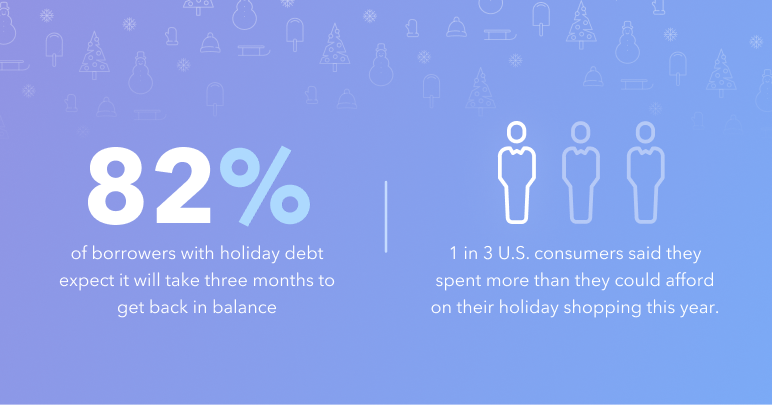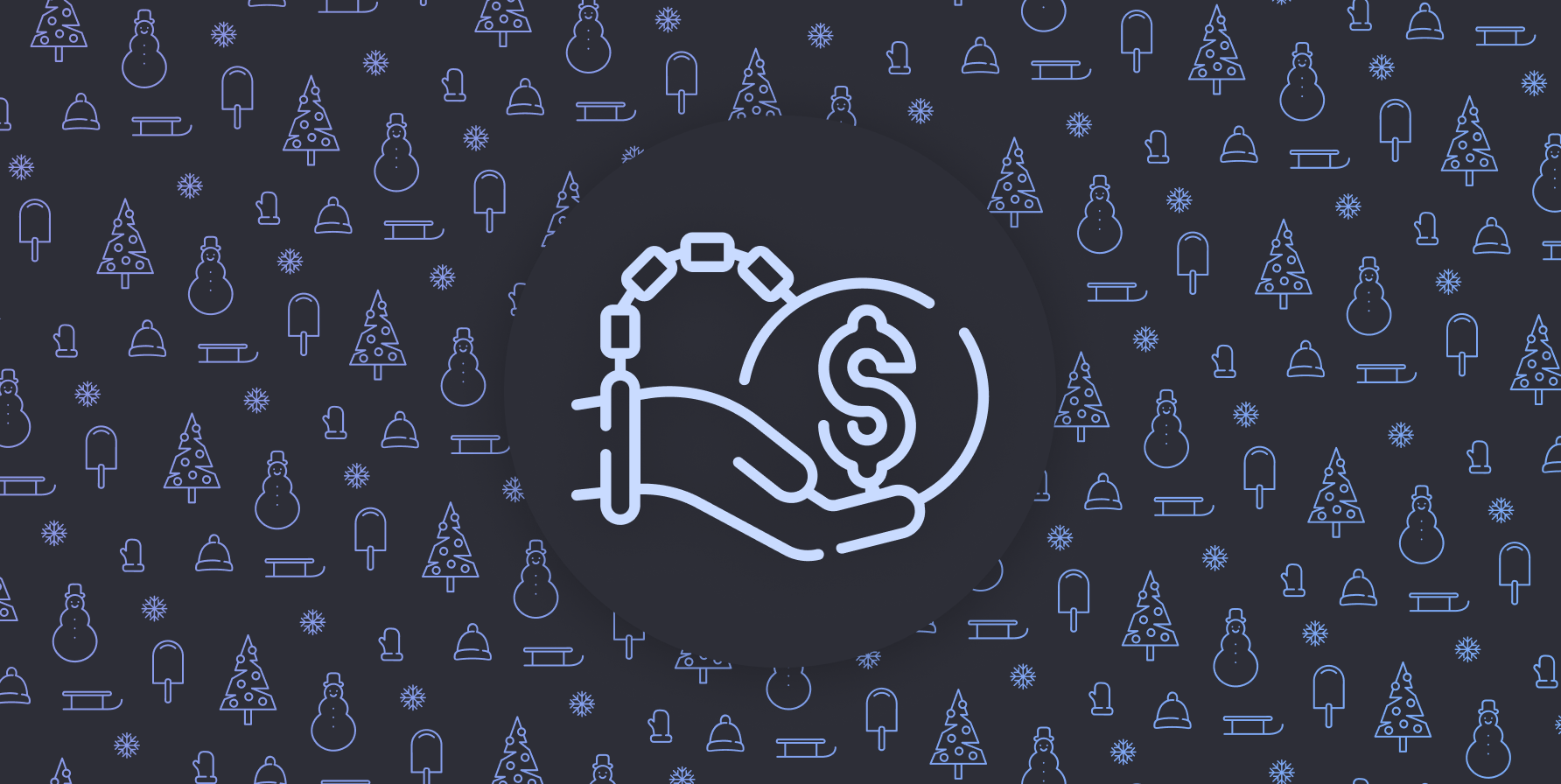The bells have rung, and the holiday decorations have come down. Now it’s time to pay off all the holiday expenses.
Despite increased inflation (the highest in more than three decades) and a pandemic that shows no sign of slowing, consumers certainly shopped till’ they dropped this year. According to the National Retail Federation retail sales reached the highest on record in the weeks leading up to the holidays, growing as much as 11.5 percent compared to 2020. But, holiday debt is one gift consumers won’t be able to return.
“1 in 3 U.S. consumers said they spent more than they could afford on their holiday shopping this year,”
The post-holiday season can be stressful for those trying to recover financially from all the gift-giving and goodwill. And this year, with inflation at its highest point in forty years, consumers are feeling a hit to their wallets.
Welcoming in the New Year…Debt
One survey found that 1 in 3 U.S. consumers spent more than they could afford on holiday shopping in 2021. And that rings true, seeing as 36 percent of U.S. consumers are starting the new year with holiday debt, up from 31 percent a year ago.

Credit cards continue to be the most popular avenue for debt-carrying consumers, but many consumers were strapped with debt even before all the Black Friday sales.
In 2021, the average Americans’ total credit card debt was $5525, and while that average is down six percent from 2020, overall, credit card debt increased to $17 billion during the third quarter of 2021.
Despite this increase, the average holiday debt ($1249) dropped 10 percent from 2020 ($1381). But, unfortunately, for 82 percent of borrowers, paying off holiday debt won’t happen within one month of the new year. In fact, most expect it will take three months to get back in balance.
“For 82 percent of borrowers paying off holiday debt won’t happen within one month of the new year. In fact, most expect it will take three months to get back in balance,”
How to Recover from Debt
The holiday hangover. You may find yourself in a similar situation — racked up with credit card bills, personal loans and buy now, pay later (BNPL) financing to pay off those holiday expenses. Even if your budget went out the window, there are still steps you can take to get back in balance:
Step 1: Assess the Damage
Take stock of what you spent money on this holiday season — decorations, gifts for loved ones, travel costs, etc. Make a list of all of your debts, payment due dates, minimum payment amounts and interest rates along with essential expenses such as rent, mortgage, groceries, medical costs, etc.
Step 2: Make a Plan
Focus on paying off your debt sooner rather than later, make a plan and stick to it. Finance experts suggest the “snowball method” (paying off the smallest amount of debt first and working your way up to the largest) or the avalanche method (paying off your debt with the highest interest rate first).
Paying off credit cards with the highest interest rates first helps you avoid becoming buried under ever compounding interest down the road, but if that’s too overwhelming, try starting with smaller balances to gain some momentum and see instant progress.
“My no. 1 tip for someone who wants to reduce their credit card debt is to get a balance transfer credit card,” says Ted Rossman, senior industry analyst at CreditCards.com, "and then to focus on getting out of debt as quickly as possible." Balance transfer cards allow you to pay as little as zero interest on the amount you transfer, which gives you more time to put money towards paying off the debt rather than paying off debt with additional interest charges.
Whenever possible, pay more than the minimum amount on your monthly credit card statements — this will make a more significant dent in your debt while improving your credit score.
Step 3: Build out a Budget
Once you have a plan in place to pay down your debt, revisit the list you made with all your essential expenses. See where you have extra room to focus on replenishing your savings account and emergency fund.
Keep in mind, when it comes to paying off high-interest debt, some experts suggest discontinuing contributions to rainy day funds with low interest returns. Depending on your financial situation, choose the approach that makes the most sense for you.
Next, see where you can save or scrape up some extra dough in the meantime. Here are some tips:
- Go for a no-spending spree to avoid digging yourself a deeper hole
- Try eating in and saving the money spent on take-out and dine-in meals.
- Get ahead of your spring cleaning — go through your home and closet and resell items you no longer need.
- Cancel infrequently or unused subscriptions
- Create a side hustle with sites like TaskRabbit, InstaCart, UpWork or Fiverr
- Avoid post-holiday sales and online shopping
Ready to get back on track? Let’s GO!
Better Bill Pay Can Help
Consumers now have access to countless ways to pay with modern and convenient methods, but the average consumer has far fewer options than you would think. Most financial institutions (FI) provide their customers with some form of bill payment technology, but the majority of those tools are out of step with the needs of today’s consumers.
Amid a holiday hangover and rising inflation — just one late payment can jeopardize a person’s financial standing. This is why BillGO is leading the way to a more modernized method of paying and managing bills and subscriptions. Our award-winning, real-time bill management and payments platform puts consumers in charge of their financial obligations. They can decide when and how they pay their bills. They also have end-to-end visibility — from notifications that bills are pending to real-life confirmations showing payments have been made.
Next Steps
Are you a customer looking for a more efficient way to manage and pay your bills? Ask your financial services provider if BillGO powers their bill pay solutions.
Or, if you are a payment executive, start the new year out strong by dedicating your organization’s resources to deliver what your customers want.

